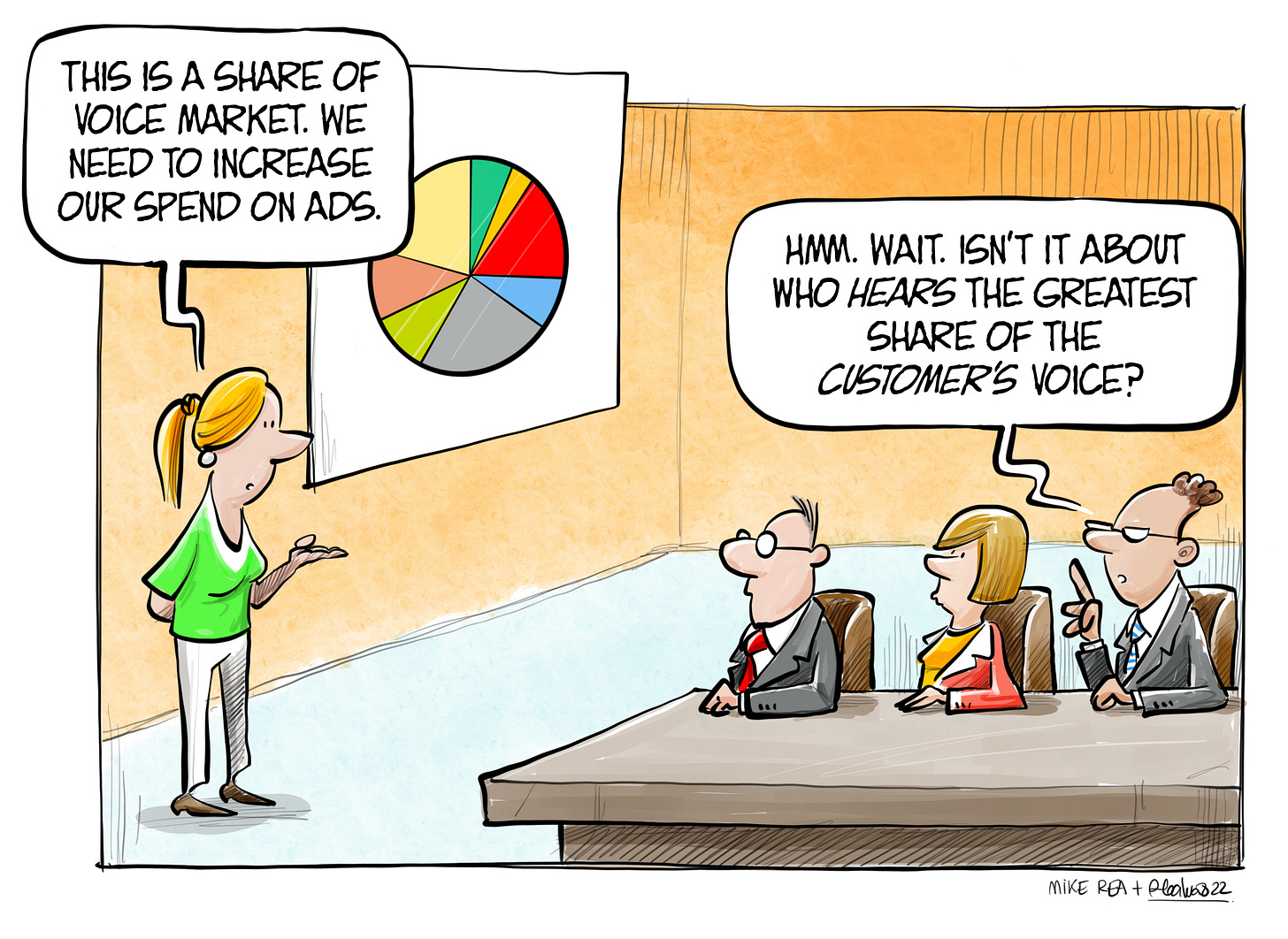Share of voice/ share of ear
If your voice isn’t getting through, it is possible that making it louder is not the solution.
It is typical to hear companies talk about share of voice, but when your message is disconnected from the real goals of your customer, it really won’t matter how loud you are, or how much you crowd out other voices - it won’t be more relevant with increased transmission.
We crafted a ‘6 As’ model of communication a while back, describing the stages that a message might take from the time it leaves your mouth to the time something good happens.
Attention
Awareness
Acceptance
Agreement
Action
Advocacy
At each stage there, relevance is key.
So, knowing that a message needs to be relevant, surely the predominant idea is to listen, and to hear the customer. Imagine that your customer tells you something she has told no other company, or she tells you a day earlier than she tells your competitor. That would be asymmetric learning. You’re looking for opportunity faster than others.
So many good drugs land and fail to connect. It is important to consider that it might not be the drug, but the message. Your customer may not be able to give you a better message, but they can give you a better insight or problem statement for you to work with. They might give you a better understanding of the challenge of moving from what they do currently to what you want them to do. If you’d done that listening earlier, there’s a good chance that the product itself could have addressed the pain point or unmet need better than your competition.
It isn’t captured as a metric, but I’d bet the farm on ‘share of ear’ being a better predictor of market performance than ‘share of voice’.




